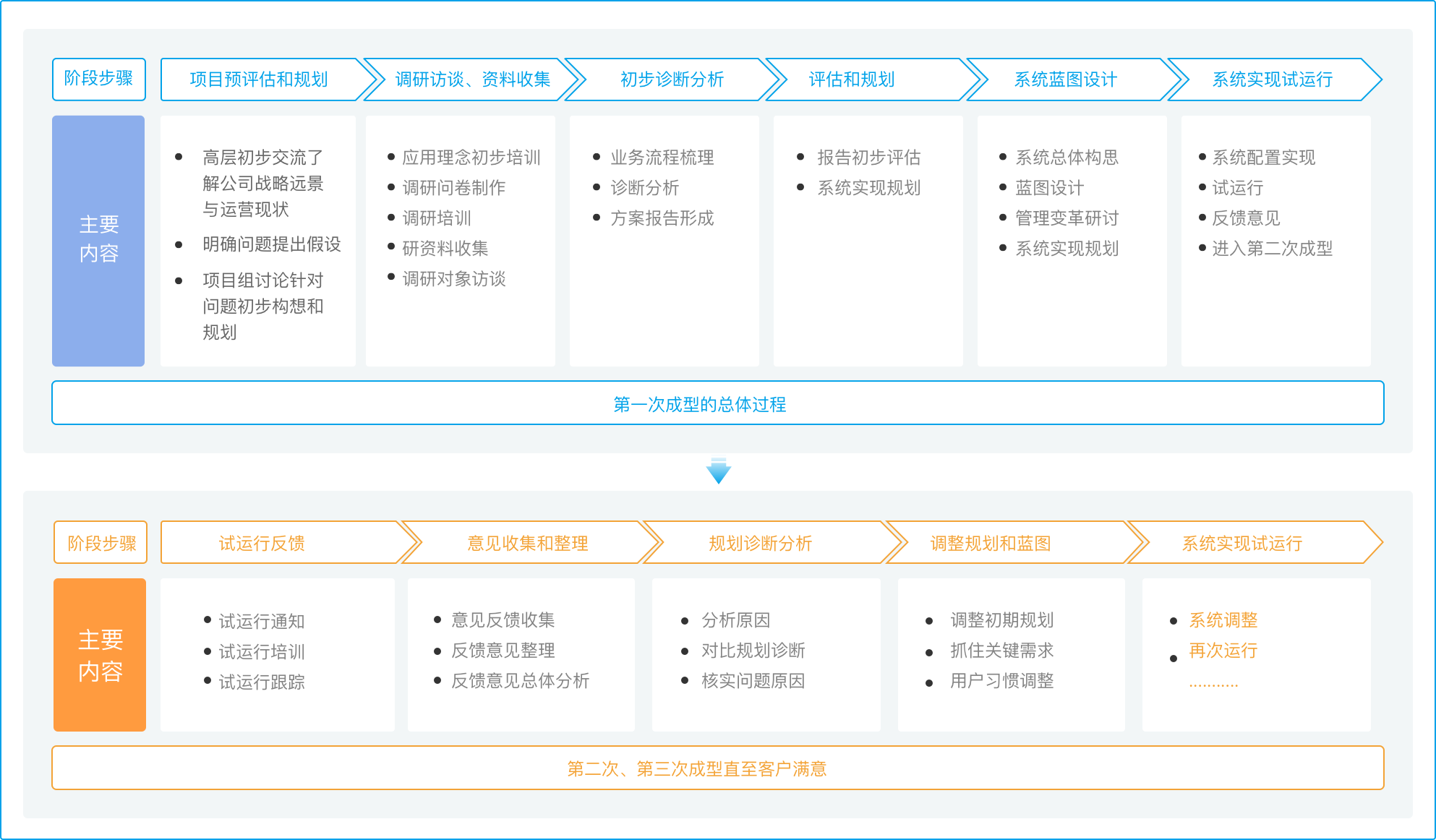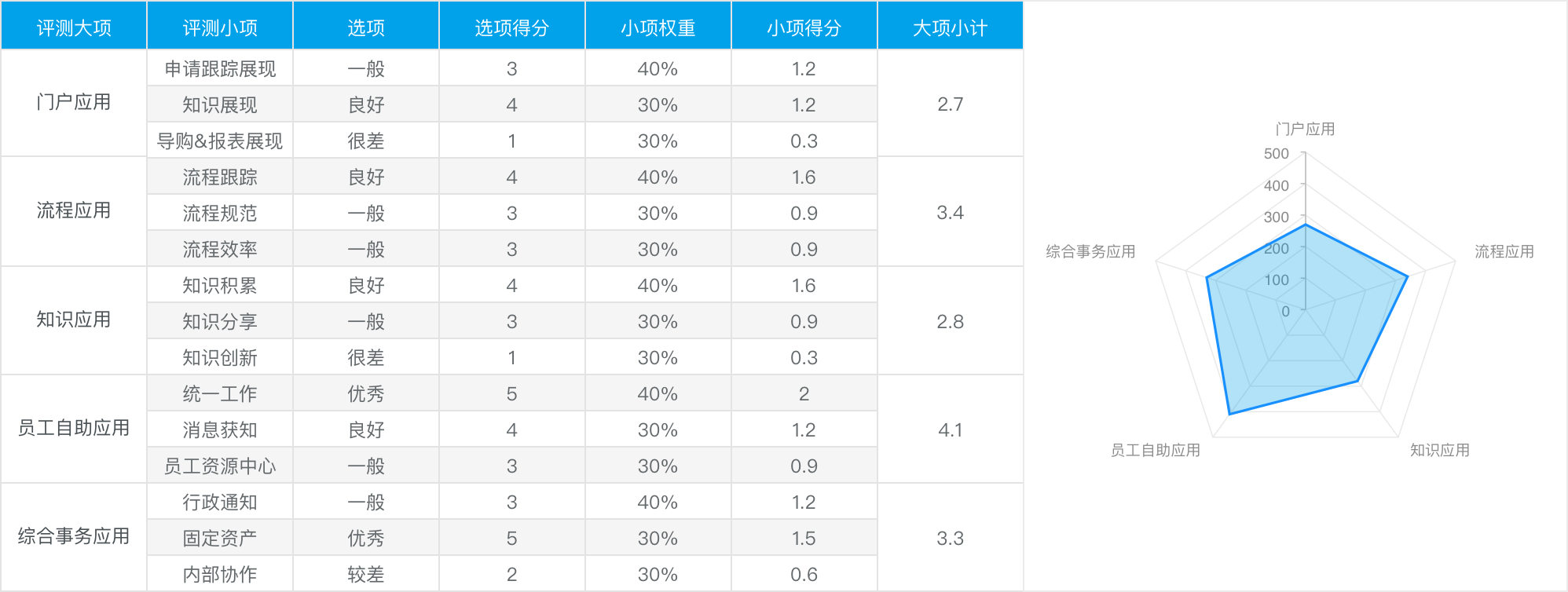Professional product consultants will provide you with a long-term integrated service system from consulting, training, implementation, and promotion, to after-sales support, assisting your enterprises in promoting and using the service system step by step and building the most suitable whole process service solutions for enterprises.
Implementation flow chart of collaborative management
Clear objectives, pragmatic operations, personalized services, and precise implementation help enterprises to gradually implement their demands.
From the preliminary blueprint design, research, and interview to the prototype presentation, the whole procedure is repeatedly conducted to build an application that meets the requirements of the organization.

Based on the business work and internal structural changes in the organization, simple applications with immediate effects can be released and undergo continuous improvement until all applications are published online.
“Learn about how to evaluate and test the current platform. In most cases, two modes are used. One mode is to invite suppliers to test and evaluate the platform remotely or on-site on a regular basis, and provide suggestions for further improvement. The other mode is to obtain the relevant self-assessment model, as shown below. Self-assessment is conducted based on this assessment model. The following general principles are included:”
Promotion is implemented in phases. The platform is used first by a small group of employees, and then by all staff. The in-depth use of core applications of the platform is implemented later. During continuous use, the platform will be used in a more in-depth and personalized way in the final phase.
Establish a self-assessment mechanism that works at a fixed frequency, such as once every quarter, once every six months, or once a year. Once a year is generally preferred.
Involve different departments and users, and balance the needs of users based on different factors, as different departments have different usage demands.
Perform regular updates of self-evaluation items. When the standards of the self-evaluation items developed in the early stage are met, you can adjust, upgrade, or refine the items.
Learn from the experiences of customers with similar demands. In addition to the suggestions provided by the supplier, you can also regularly communicate with customers who have similar demands to get more feasible evaluation items.

Figure: OA application maturity testing model